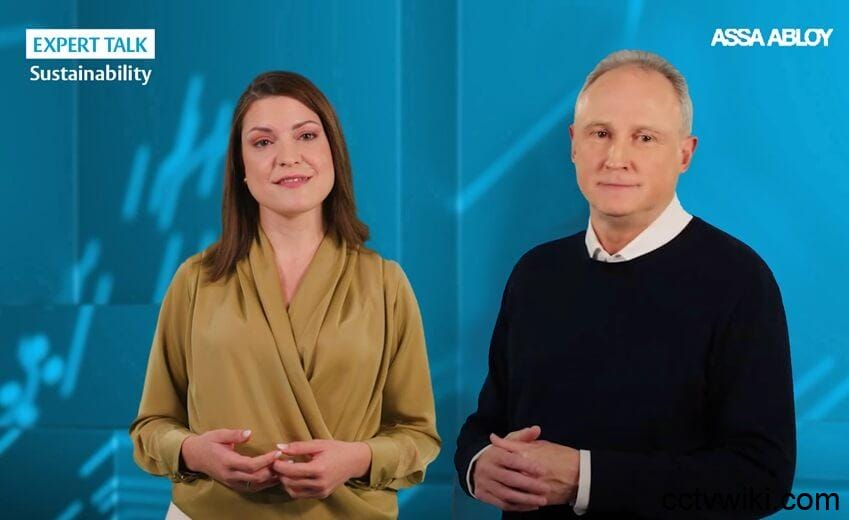Buildings guzzle about 30% of the world’s energy, according to the International Energy Agency. With climate change looming and costs soaring, businesses are scrambling to boost energy efficiency. A new video from ASSA ABLOY’s Expert Talks series explores how choosing the right access solutions can make a real difference – benefiting both the bottom line and the environment.
“We all have a responsibility to cut emissions, including embodied carbon, and your choice of access solution can make a meaningful difference,” says Olympia Dolla, Head of Sustainability Program EMEIA at ASSA ABLOY Opening Solutions. “Digitalization can be one key to improved sustainability performance.”
Featuring expert insights from Olympia Dolla, the latest Expert Talk dives deep, equipping customers with the sustainability and green building knowledge they need to make smarter, long-term decisions and investments.
1. Consider a building’s complete life-cycle
From the get-go, during design or specification, ASSA ABLOY offers in-depth support for architects, developers, and specifiers aiming for accreditation in six leading green building certifications: BREEAM, LEED, Green Star, WELL, DGNB, HQE.
During installation, opting for a wireless digital solution makes an immediate impact. Because these devices don’t need cables around the door, there’s little to no drilling, which cuts down on power consumption. There’s also less damage to the building itself. And since wireless installation is faster, installers make fewer trips to the site, reducing travel.
When it comes to using a digital building system, energy consumption is always a factor. Traditional wired systems constantly draw power to keep the locks working. Wireless access is different: battery-powered devices only “wake up” when someone uses a credential. This makes them far more energy-efficient than wired solutions.
“Energy use during operation may be eliminated altogether when digital locks are powered by innovative energy harvesting technology,” adds Olympia.
2. EPDs are more important than ever
The most reliable way to measure the impact of a digital access device is with an Environmental Product Declaration (EPD). An EPD offers a detailed assessment of a product’s entire life-cycle, mapping its footprint from raw materials to manufacturing, logistics, use, and end-of-life recycling.
Product-specific EPDs help architects, specifiers, contractors, and developers accurately predict both embodied carbon and the finished building’s performance. They’re also key for earning points toward green building certifications. And starting in 2026, an EPD will be required for CE Marking – making it essential for selling products in the European market.
“The use of EPDs has grown quickly,” says Olympia. “In fact, many projects already require an EPD to specify a product or solution, well ahead of the new European regulations for the commercial and residential sector, including renovations.”
ASSA ABLOY’s Expert Talks series aims to better inform decision-makers – security managers, directors, consultants, and specifiers – about the key issues in five areas of digital access: Security, Sustainability, Convenience, Innovation, and Reliability. As the experts in these videos show, each of these areas offers a potential ROI for businesses looking to future-proof their access solutions.
To learn more, watch “Expert Talk: Sustainability,” the second in ASSA ABLOY’s video series, at https://www.assaabloy.com/group/emeia/stories/blogs/das-expert-talk-about-sustainability

